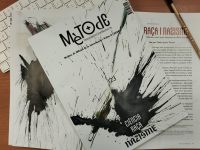
The term «storytelling» is now commonplace in journalism: many say that this is what reporting is all about. It is now taken for granted that a piece of news is a narrative text, a story. But the truth is that very few of them are. We live under the rule of a synecdoche (López-Pan, 1997).
It is also common among science communicators to see storytelling as the essence of their work. But again, this narrative model is often referred to imprecisely, which often prevents us from using this resource effectively. A study of scientific video storytelling on the internet found the surprising result that only 5 % of the videos analysed used some form of narrative structure (Davis & León, 2018).
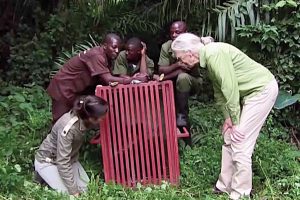
Jane Goodall communicated her knowledge about chimpanzees. / Photo: National Geographic
The confusion may stem from the fact that storytelling is widely accepted by both journalists and science communicators as an effective way of communicating science to the public. Indeed, we know that the story can act as the glue that creates a unified and continuous statement, making the audience more likely to engage with and remember the knowledge being communicated.
Throughout history, a number of scientists and communicators have been masters at constructing scientific narratives. Among the pioneers is Alexander von Humboldt and his Personal narrative of a journey to the equinoctial regions of the new continent, a work published in 32 volumes between 1814 and 1831 that combines scientific knowledge with the naturalist’s experiences during his travels in America. In this way, Humboldt constructed a text that was highly attractive to lay readers and an example of excellent popularisation.
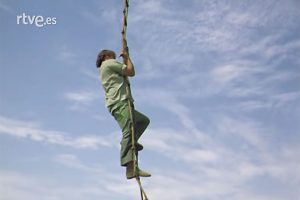
Félix Rodríguez de la Fuente climbing a rope while shooting his TV documentary series. / Photo: Rtve.es
Although the subject is still under-researched, the list of scientists and science communicators who have used stories to communicate their knowledge is long (León, 2024). Some of these stories have become leitmotifs used repeatedly by popularisers from different eras. For example, Jacques Cousteau, Jane Goodall, or Félix Rodríguez de la Fuente transmitted their knowledge through stories about their scientific expeditions, whose narrative patterns have been compared to those of medieval chivalry novels because of their heroic individualism. Scientists become heroes involved in a quest (for truth) that leads them to confront adversaries and overcome dangers (Dahlstrom, 2014).
Communicating science through this kind of story allows us to construct statements in which the logical reasoning of science is transformed into something else. It becomes the clay to mould something new: an intrinsically persuasive type of statement, capable of reaching audiences that are initially uninterested in science. Scientific facts and data become the glass beads on a bracelet, binding it together and giving it order and unity. Moreover, because the main character of the story is a scientist, the audience can make an emotional connection, not only with the researcher, but also with science. And all this is wrapped up in an entertaining and easy-to-follow narrative, which makes it possible for communicators to hold the audience’s attention for longer and for the audience to remember what they are told better.
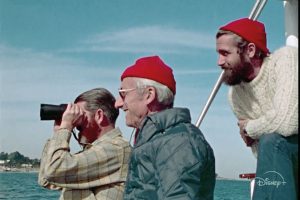
Jaques Cousteau was a prominent figure for science in television. / Photo: Disney
But the role that stories have played in the advancement of science goes beyond being an effective means of communication: they have also played a key role in the development of scientific thought itself. One of the most emblematic examples is Charles Darwin, whose magnum opus, On the origin of species (1859), uses stories embedded in culture as an essential element in shaping his theory of the evolution of species through natural selection. For example, he uses the concept of the great family to explain all forms of life over time as part of a single dynasty. The very concept of natural selection is a metaphor and therefore contains the essence of a story. Darwin conceives of natural selection as a conscious entity capable of making choices that favour some features of living things and eliminate others. In this way, history becomes an essential part of the theory itself.
Despite the undoubted importance of storytelling, both for communicating and creating knowledge, we must not forget that constructing stories about science can be problematic. In principle, stories are not subject to the same accuracy requirements as purely scientific texts, and can therefore convey distorted images of science and researchers to the public. A further criticism is that stories can lead to an oversimplification of scientific concepts, and can lead to misunderstandings or an incomplete understanding and uncritical acceptance of knowledge. In short, stories are associated with a lack of scientific rigour.
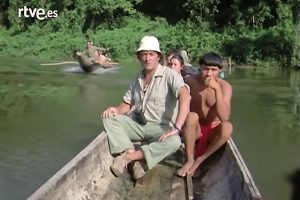
Félix Rodríguez de la Fuente in one of his science documentaries. / Photo: Rtve.es
However, the history of science shows that it is possible to combine rigorous knowledge with an attractive, emotional and truthful presentation. The example of great communicators shows that it is possible to tell science through stories and to do so with rigour. Transforming science into truthful storytelling requires a deep knowledge of the subject matter and an understanding of the narrative mechanisms through which it is articulated. Communicating science is no easy task, even when it is done through stories.
This monograph seeks to provide new insights into the role of stories in shaping scientific thought and how this resource can help to communicate science effectively. Hilda Paola Muñoz-Pico analyses how social networks and the technological tools associated with them are influencing the way stories are constructed, not only in their design but also in their narrative characteristics. Social networks have popularised short, entertaining, and vertical videos and offer new functionalities, such as the possibility of live broadcasting or the creation of information «threads».
Daniel Gamito Marques shows that biblical stories have served as a reference for scientific research, providing starting points for the construction of scientific theories and concepts. He also points out that scientific thought has sometimes been shaped by stories, such as Charles Darwin’s approach to the theory of the evolution of species.
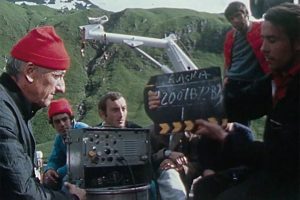
Jacques Cousteau while shooting a documentary. / Photo: Disney
Aleida Rueda, Cecilia Rosen, and Javier Crúz-Mena summarise some ideas about the role of stories in science communication. They highlight the variety of definitions of a story and underline its importance in capturing the attention and emotions of the audience. They also identify different types of structures commonly used to construct science stories.
Finally, Wiebke Finkler, Lloyd S. Davis and their colleagues present a study of how cultural framing can influence the effectiveness of science storytelling. Based on experimental work using educational videos with two different types of cultural framing, the authors show that audience engagement can vary according to culture. Their conclusions highlight the importance of using different cultural frames to communicate science to different audiences.
References
Dahlstrom, M. F. (2014). Using narratives and storytelling to communicate science with non-expert audiences. Proceedings of the National Academy of Sciences of the USA, 111(Suppl. 4), 13614–13620. https://doi.org/10.1073/pnas.1320645111
Davis, L. S., & León, B. (2018). New and old narratives: Changing narratives of science documentary in the digital environment. In B. León & M. Bourke, Communicating science and technology through online video: Researching a new media phenomenon (p. 55–63). Routledge. https://doi.org/10.4324/9781351054584-5
León, B. (2024). Grandes comunicadores de la ciencia. De Galileo Galilei a Rodríguez de la Fuente (submitted for publication).
López-Pan, F. (1997). Consideraciones sobre la narratividad de la noticia. El imperio de una sinécdoque. Communication & Society, 10(1), 9-60. https://doi.org/10.15581/003.10.35636

